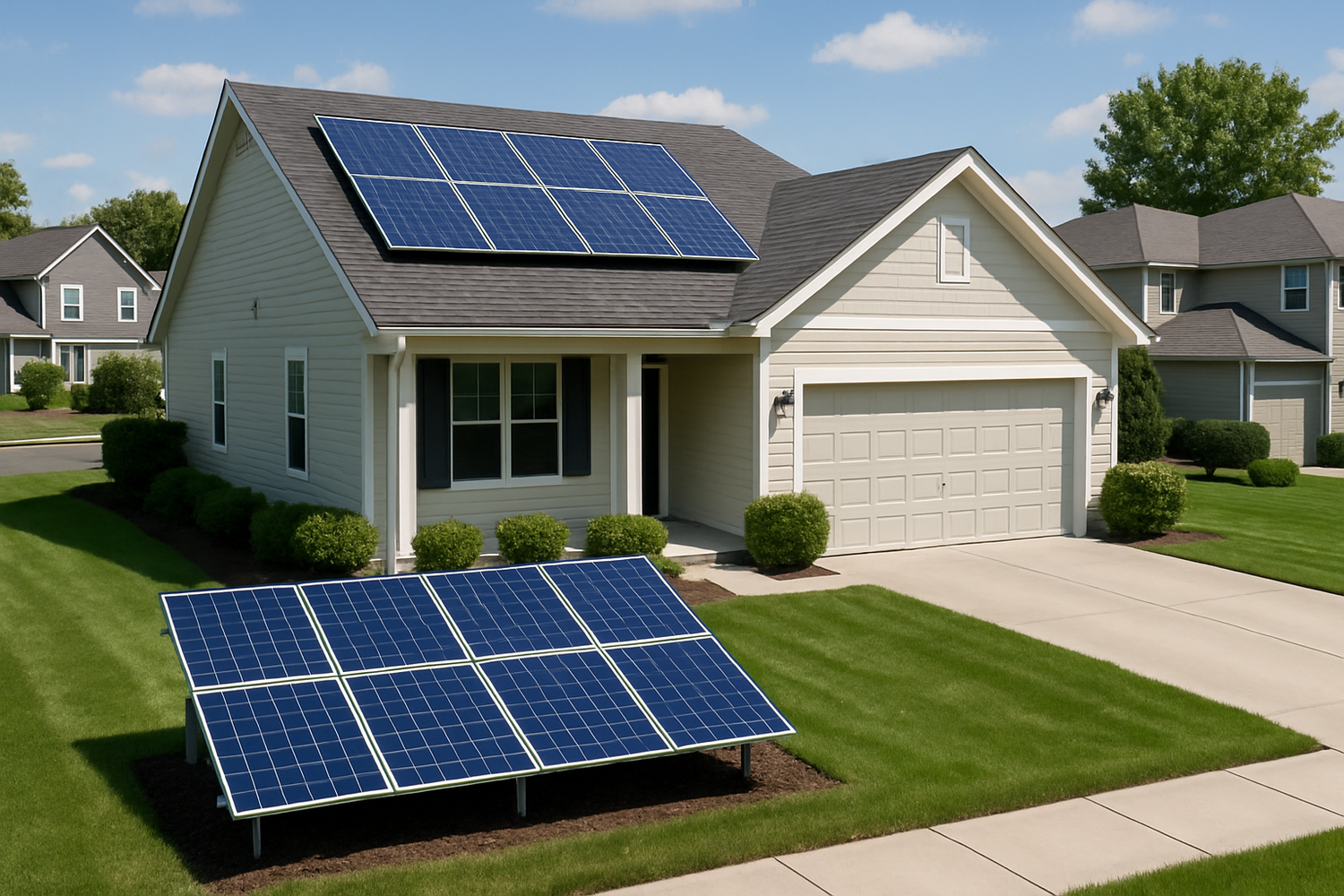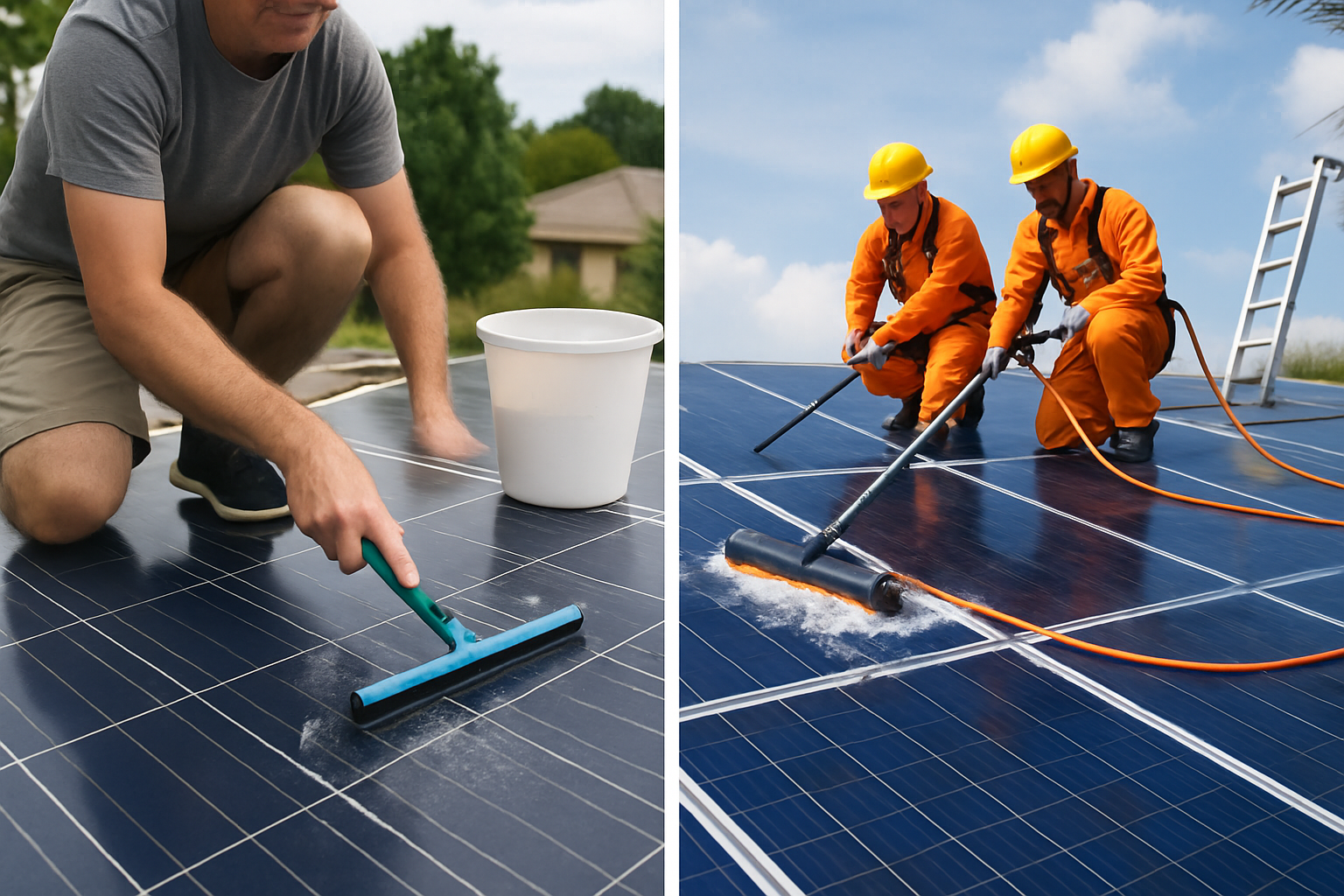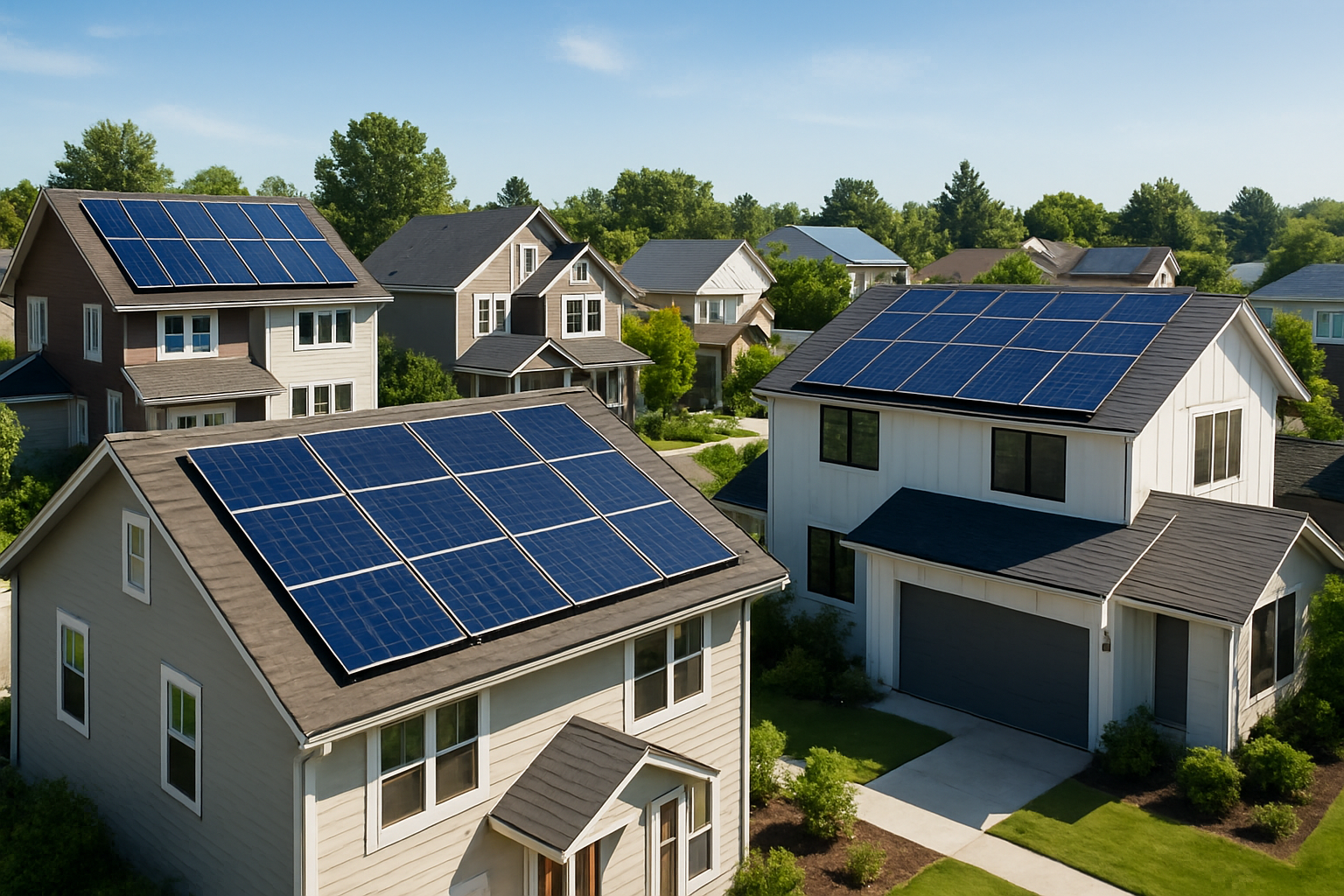Homeowners associations (HOAs) present unique challenges for solar installation projects. While solar energy adoption continues to surge across residential communities, navigating HOA restrictions requires careful planning and strategic decision-making. Understanding the differences between roof-mounted and ground-mounted solar systems becomes crucial when working within strict neighborhood guidelines.

Understanding HOA Solar Restrictions and Legal Framework
Most states have enacted solar access laws that limit HOA authority over solar installations. *According to the U.S. Department of Energy, these laws generally prevent HOAs from completely prohibiting solar installations while allowing reasonable restrictions on placement and appearance.*
HOA restrictions typically focus on three main areas:
- Aesthetic requirements: Panel color, mounting hardware visibility, and overall visual impact
- Placement limitations: Specific roof areas or ground locations where installations are permitted
- Application processes: Required documentation, approval timelines, and compliance verification
The approval process varies significantly between communities. Some HOAs maintain streamlined procedures that expedite solar applications, while others require extensive documentation and multiple review stages. Understanding your specific HOA's requirements before beginning the installation process saves time and prevents costly modifications.
State-Level Solar Rights Protections
Solar access laws provide homeowners with important protections against overly restrictive HOA policies. These laws establish minimum standards that HOAs must follow, ensuring residents can access solar energy benefits while maintaining community aesthetic standards.
Key protections typically include:
- Prohibition of blanket solar bans
- Reasonable restriction standards
- Expedited approval processes
- Appeal mechanisms for denied applications
Roof-Mounted Solar Systems: HOA Compliance Strategies
Roof-mounted systems often present the most straightforward path to HOA approval. Their integration with existing home structures typically generates fewer aesthetic concerns compared to ground-mounted alternatives.
Design Considerations for HOA Approval
Successful roof installations under strict HOA guidelines require attention to visual integration. Black-on-black panel designs minimize visual contrast against dark roofing materials, while low-profile mounting systems reduce the apparent thickness of the installation.
Panel placement strategies that maximize HOA acceptance include:
- Rear-facing installations: Positioning panels on roof sections facing away from primary street views
- Architectural integration: Aligning panel edges with roof lines and architectural features
- Minimal visibility approaches: Concentrating installations on less visible roof areas
Modern lithium battery storage systems can be seamlessly integrated with roof-mounted installations, providing energy independence while maintaining the clean aesthetic that HOAs prefer. These systems store excess solar production during peak generation hours, enabling power usage during evening hours or outages.
Technical Advantages of Roof Mounting
Roof installations offer several technical benefits that align with HOA preferences. The elevated position typically provides optimal sun exposure throughout the day, while the existing roof structure eliminates the need for additional ground preparation or landscaping modifications.
| Advantage | Benefit | HOA Impact |
|---|---|---|
| Space Efficiency | No yard space required | Preserves landscaping standards |
| Security | Elevated, inaccessible location | Reduces vandalism concerns |
| Maintenance Access | Professional service required | Ensures proper upkeep standards |
Ground-Mount Solar: Navigating Stricter Requirements
Ground-mounted systems face more stringent HOA scrutiny due to their visibility and potential impact on community aesthetics. However, these installations offer unique advantages that may justify the additional approval requirements.
Strategic Placement and Screening
Successful ground-mount installations in HOA communities require careful site selection and screening strategies. Positioning systems behind existing structures, natural landscaping, or decorative fencing can minimize visual impact while maintaining system performance.
Effective screening approaches include:
- Natural barriers: Strategic tree and shrub placement to create visual buffers
- Architectural screening: Decorative walls or fencing that complement community design standards
- Topographical advantages: Utilizing natural landscape features to minimize visibility
Ground-mounted systems excel in situations where roof conditions are unsuitable for solar installation. Older roofs, complex architectural features, or shading issues may make ground mounting the preferred technical solution, even under strict HOA guidelines.
Performance Benefits of Ground Systems
Ground-mounted installations offer superior maintenance access and optimal positioning capabilities. These systems can be angled and oriented for maximum solar exposure regardless of home orientation, potentially generating 10-25% more energy than roof-mounted alternatives.
The accessibility of ground systems enables regular cleaning and maintenance, ensuring consistent performance over the system's lifespan. This advantage becomes particularly valuable when combined with advanced energy storage solutions that maximize the utilization of generated power.
Comparative Analysis: Making the Right Choice
The decision between roof and ground-mount solar under HOA restrictions depends on multiple factors including community guidelines, property characteristics, and energy goals.
Cost Considerations
Installation costs vary between mounting options, with ground systems typically requiring additional foundation work and electrical connections. However, the enhanced performance and maintenance accessibility of ground systems may justify higher initial investments through improved long-term returns.
*Research from the International Renewable Energy Agency indicates that optimal system positioning can increase energy production by up to 20%, significantly impacting overall project economics.*
Long-term Value Assessment
Both installation types contribute to property value enhancement, though market reception may vary based on local preferences and HOA community standards. Roof installations typically integrate more seamlessly with home aesthetics, while ground systems may appeal to buyers prioritizing energy performance and system accessibility.
Energy storage integration enhances the value proposition of both mounting options. Modern lithium battery systems provide backup power capabilities and energy cost optimization, benefits that resonate with environmentally conscious homebuyers regardless of panel placement.
Maximizing Success Under HOA Guidelines
Achieving solar installation approval under strict HOA guidelines requires proactive communication and comprehensive planning. Early engagement with HOA boards and architectural review committees helps identify potential concerns before they become obstacles.
Documentation and Presentation Strategies
Successful applications typically include detailed visual renderings, technical specifications, and compliance documentation. Professional installation companies experienced with HOA requirements can provide valuable guidance throughout the approval process.
Key documentation elements include:
- Architectural drawings showing system integration
- Equipment specifications and warranty information
- Installation timeline and construction impact assessment
- Maintenance and monitoring procedures
The integration of comprehensive energy storage solutions can strengthen HOA applications by demonstrating commitment to energy independence and grid stability. These systems reduce reliance on utility infrastructure while providing emergency backup capabilities that benefit the entire community.
Building Community Support
Educating neighbors about solar benefits and addressing aesthetic concerns proactively builds support for installation projects. Demonstrating how modern solar technology enhances property values and reduces environmental impact helps create positive community sentiment.
*According to the U.S. Energy Information Administration, residential solar installations have grown by over 1,000% in the past decade, indicating widespread acceptance and proven benefits.*
Whether choosing roof or ground-mount solar installation, success under strict HOA guidelines requires careful planning, professional expertise, and strategic communication. Both mounting options offer distinct advantages that can satisfy energy goals while maintaining community aesthetic standards. The key lies in understanding specific HOA requirements, leveraging available legal protections, and presenting comprehensive solutions that benefit both individual homeowners and the broader community. With proper planning and execution, solar energy becomes accessible even within the most restrictive neighborhood guidelines, providing long-term energy independence and environmental benefits.





Leave a comment
All comments are moderated before being published.
This site is protected by hCaptcha and the hCaptcha Privacy Policy and Terms of Service apply.